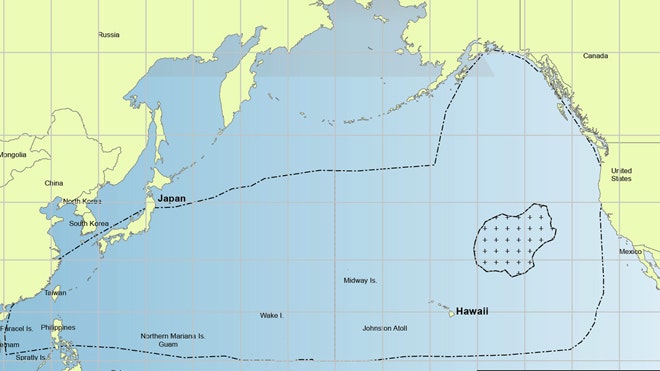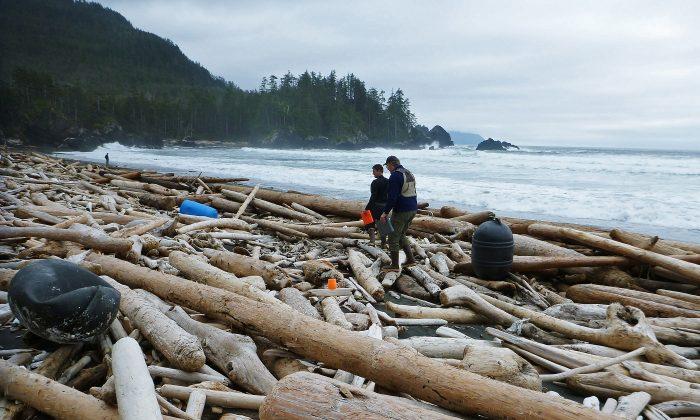A tsunami trash island is getting closer to the United States.
The gigantic mass of debris is scattered across an area of the ocean bigger than the Unites States--the trash island itself, a concentrated part of the debris, is broader than the state of Texas.
Oregon, California, Hawaii, Washington, and Canada have been on the look out for debris from the 2011 tsunami for years.
Some pieces of debris may have arrived at the U.S. as early as 2011, the the National Oceanic and Atmospheric Administration says.
Out of more than 1,600 reports of debris possibly from the tsunami, 27 items have been definitely confirmed as tsunami debris, a NOAA spokeswoman told the Daily Mail. That includes a small boat found in Hawaii waters, large docks that washed ashore in Washington and Oregon, and a motorcycle that washed ashore in British Columbia, Canada.
Potential sightings are listed on a map from NOAA.

Updated analysis from NOAA shows that the huge mass is close to California, having already passed Hawaii.
“NOAA expects widely scattered debris may show up intermittently along shorelines for a long period of time, over the next year, or long,” it says.
Originally, Japanese officials estimated that 5 million tons of debris washed into the sea but only 30 percent of that floated away.
Current estimates are not completely accurate because of the sheer size of the area in question. Some believe that there are many more millions of tons in the ocean.

NOAA says that none of the debris that has been analyzed has been contaminated, and that it’s “highly unlikely” that any debris is contaminated.
A bigger threat now appears to be potential invasive species which have made a home on the floating mass of debris.
Among the species are the Japanese shore crab and the European blue mussel, which was introduced to Asia long ago.
“We’d never seen it here, and we don’t particularly want it here,” John Chapman of the Marine Science Center at Oregon State University told Fox, arguing that it could be “invasive” and displace current marine life.
Additionally, creatures have been found among the debris, such as a type of brown algae used to make miso soup.
“We thought, ‘the Pacific can’t be crossed by living organisms from Japan,’” he said, “and we were wrong, very wrong.”






Friends Read Free